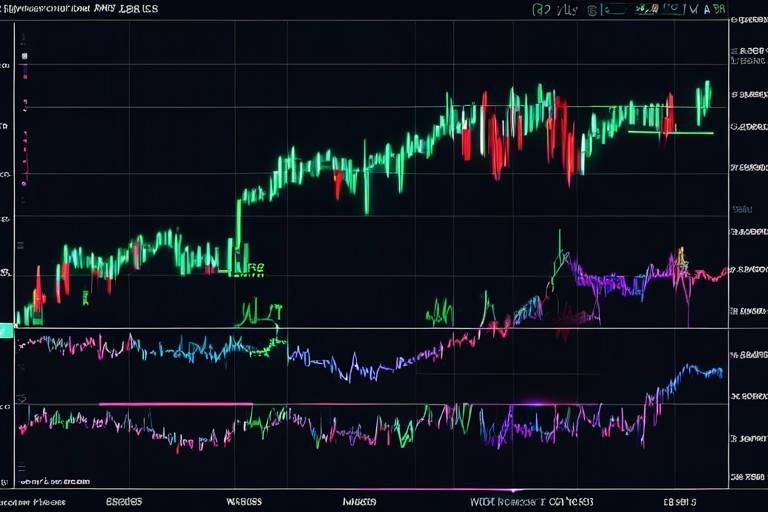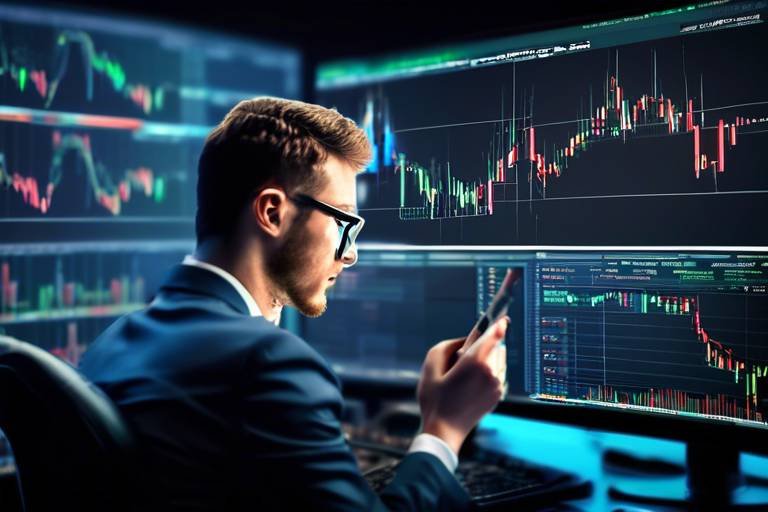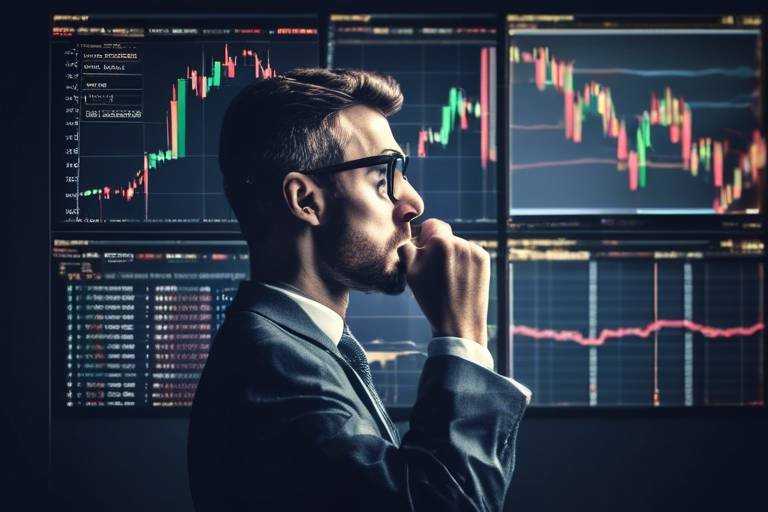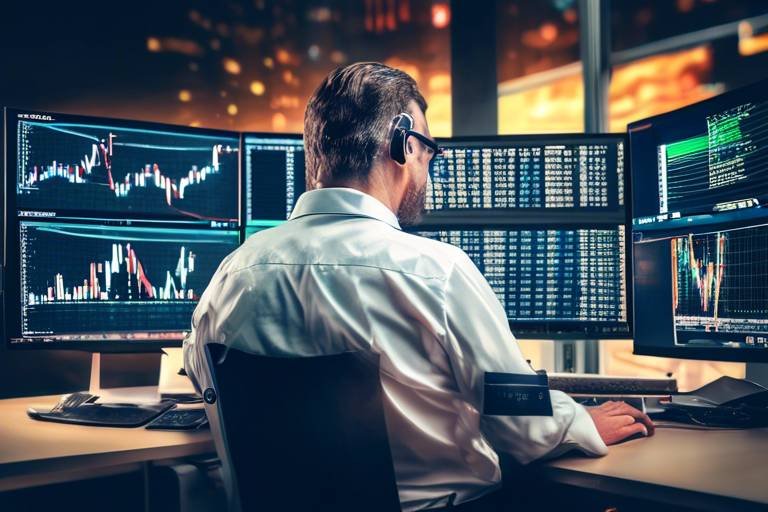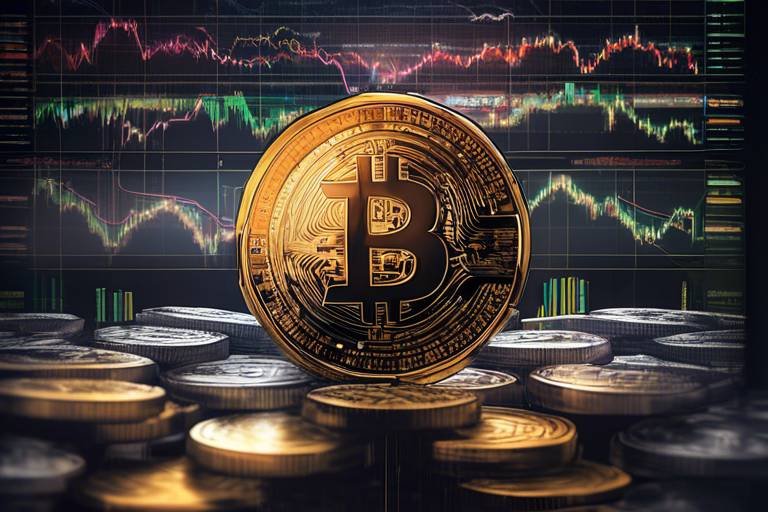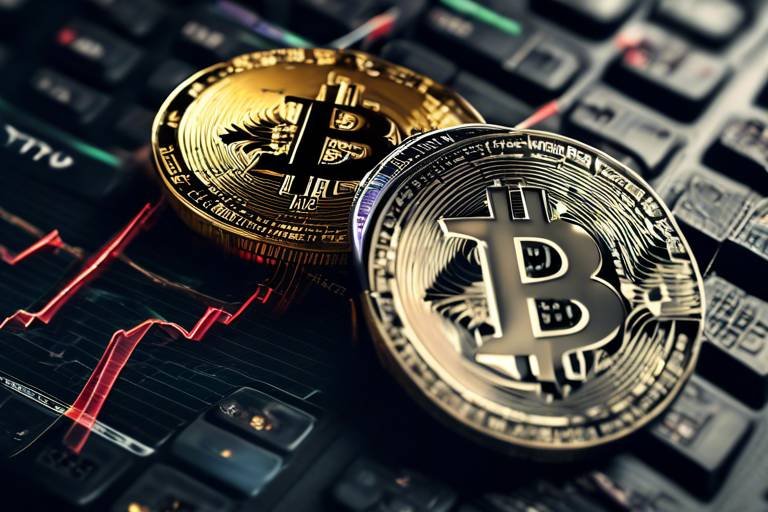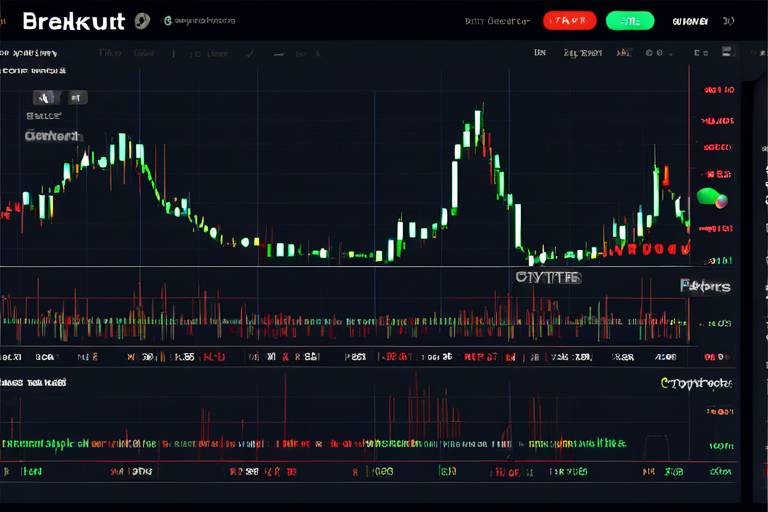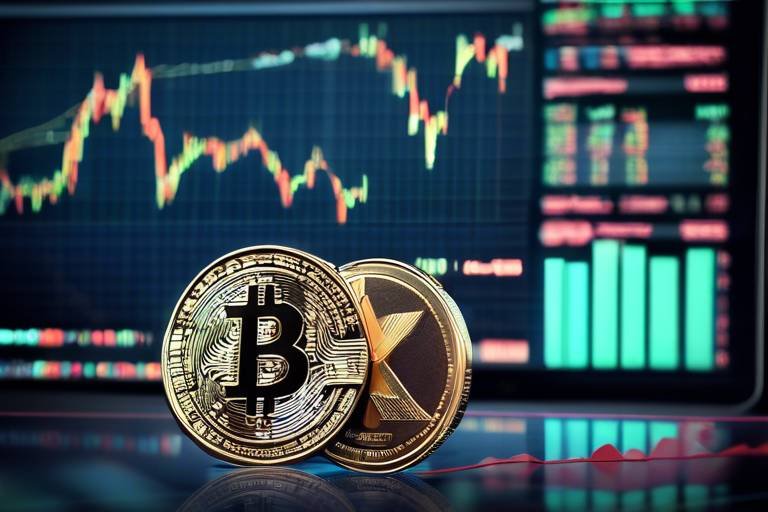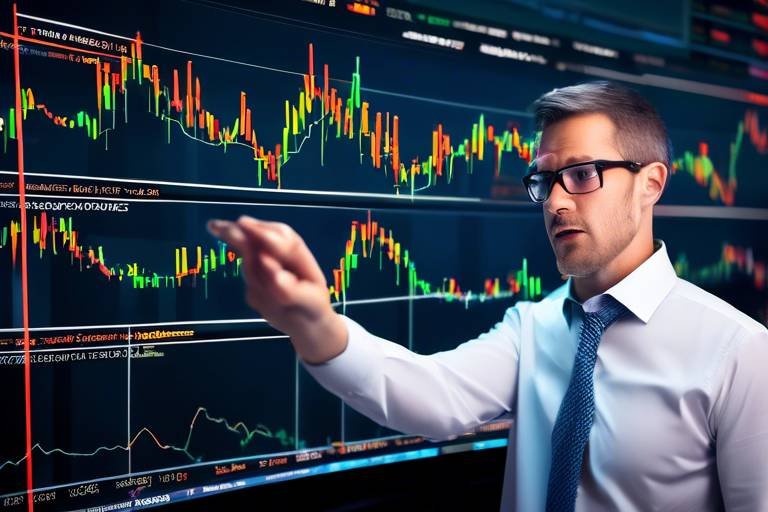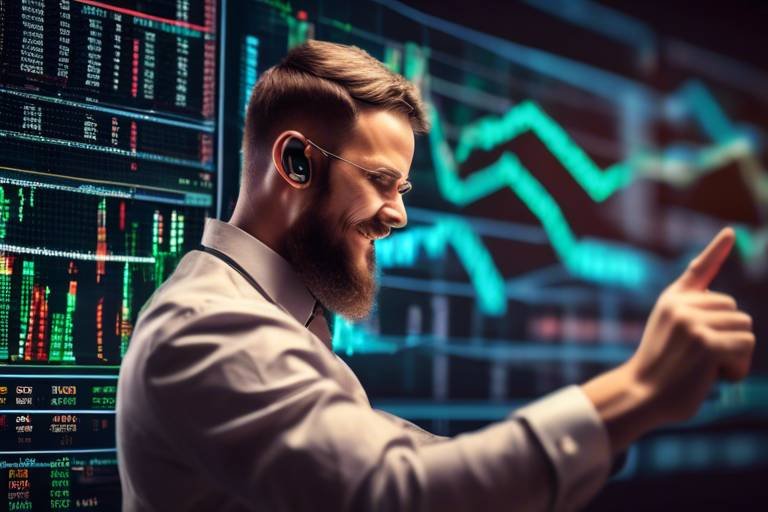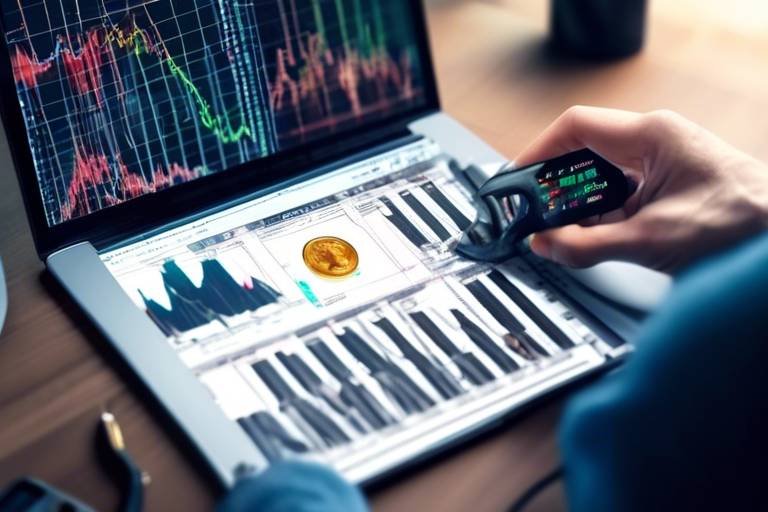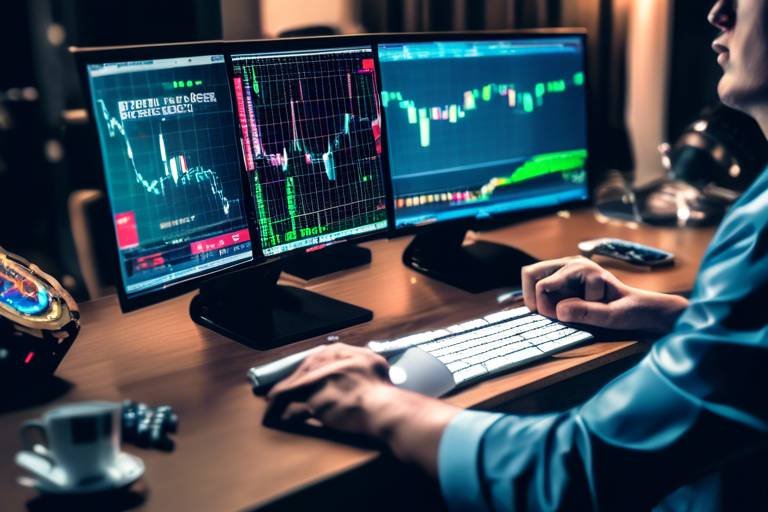The Power of Volume Weighted Average Price (VWAP) in Crypto
In the fast-paced world of cryptocurrency trading, understanding the tools at your disposal can make all the difference between a successful trade and a missed opportunity. One such tool that has gained significant traction among traders is the Volume Weighted Average Price (VWAP). This powerful metric not only provides insights into market trends but also serves as a benchmark for evaluating trade execution. In this article, we will delve into the significance of VWAP in cryptocurrency trading, exploring how it is calculated, its benefits, and practical ways traders can utilize it to enhance their strategies.
So, what exactly is VWAP? Simply put, the Volume Weighted Average Price is a trading benchmark that reflects the average price at which a security has traded throughout a specific period, factoring in both the volume and price of trades. This means that VWAP gives more weight to prices at which higher volumes were traded, providing a more accurate representation of the market's behavior. By tracking VWAP, traders can gauge market trends and make informed decisions based on historical price movements.
Calculating VWAP may sound complex, but it’s quite straightforward once you break it down. The formula involves taking the cumulative total of price multiplied by volume and dividing it by the cumulative volume. The formula can be expressed as:
VWAP (Cumulative Price x Volume) / Cumulative Volume
To put this into perspective, let’s consider an example. Imagine a trader who executes three trades throughout the day:
| Trade Number | Price | Volume | Price x Volume |
|---|---|---|---|
| 1 | $100 | 10 | $1,000 |
| 2 | $105 | 15 | $1,575 |
| 3 | $110 | 5 | $550 |
In this scenario, the cumulative price times volume would be $1,000 + $1,575 + $550 $3,125, and the cumulative volume would be 10 + 15 + 5 30. Thus, the VWAP would be:
VWAP $3,125 / 30 $104.17
The calculation of VWAP relies on two main components: price and volume. Understanding how each of these components affects the final VWAP figure is crucial for traders looking to leverage this tool effectively.
Price determination in VWAP refers to the average price of each transaction throughout the trading day. Each trade contributes to the VWAP, and fluctuations in price can lead to significant changes in the VWAP calculation. For instance, if a large volume of trades occurs at a lower price, it can pull the VWAP down, indicating a bearish sentiment in the market.
On the other hand, volume plays a pivotal role in influencing the VWAP. A higher volume during specific price levels can significantly alter the VWAP, making it essential for traders to monitor trading activity closely. If a trader executes a large order at a particular price point, it can shift the VWAP, potentially creating new support or resistance levels.
Interpreting VWAP is all about understanding its implications for market trends. Traders often look at VWAP to identify potential support and resistance levels. When the price is above the VWAP, it may indicate a bullish trend, while a price below the VWAP could suggest bearish sentiment. This can help traders determine optimal entry and exit points, enhancing their overall trading strategy.
Utilizing VWAP offers several advantages that can significantly benefit traders in the crypto market. Here are some key benefits:
- Improved Trade Execution: VWAP provides a benchmark to assess trade execution quality. By comparing entry prices to VWAP, traders can determine if they are buying or selling at favorable prices.
- Market Impact Reduction: Using VWAP can help minimize market impact by allowing traders to execute large orders more discreetly. This can be particularly advantageous in the volatile crypto market.
- Enhanced Decision-Making: Incorporating VWAP into trading strategies can lead to better decision-making based on historical price movements and trading volume.
With VWAP as a benchmark, traders can evaluate their trade execution quality. If a trader buys below the VWAP, it may indicate a good entry point, whereas selling above the VWAP could signify a profitable exit. This insight is invaluable, especially in a market where timing can make or break a trade.
Another significant advantage of using VWAP is its ability to reduce market impact. Large orders can sway the market, but by using VWAP, traders can execute their trades more discreetly. For example, instead of placing a large order all at once, a trader might break it down into smaller orders that align with the VWAP, thus minimizing visibility and potential price disruption.
What is VWAP used for in crypto trading?
VWAP is primarily used as a trading benchmark to assess the average price of a cryptocurrency throughout the day, helping traders make informed decisions about entry and exit points.
How often should VWAP be calculated?
VWAP can be calculated on various time frames, but it is typically recalculated at the end of each trading day to provide a daily benchmark.
Can VWAP be used in conjunction with other indicators?
Absolutely! Many traders use VWAP alongside other technical indicators, such as moving averages or RSI, to confirm signals and enhance their trading strategies.
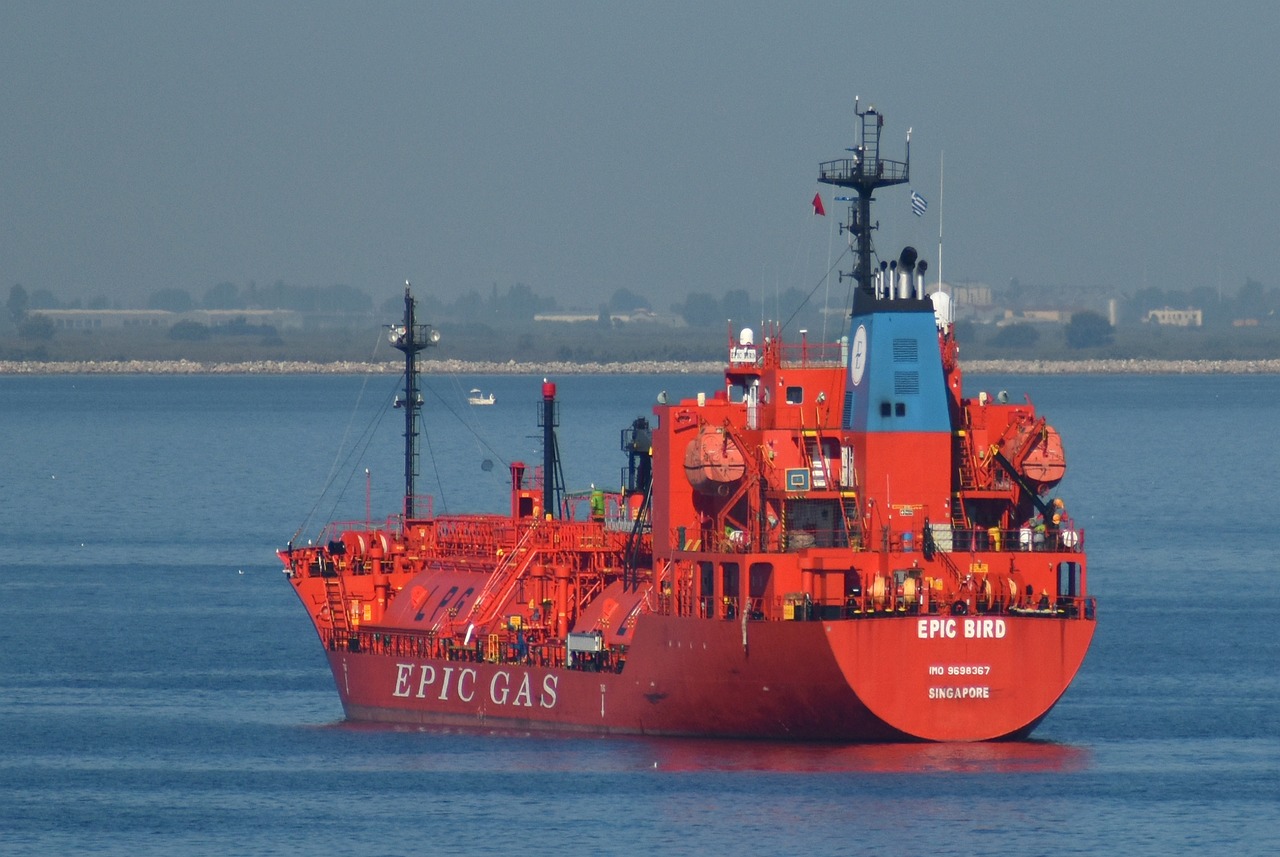
Understanding VWAP
This article explores the significance of VWAP in cryptocurrency trading, its calculation, benefits, and how traders can effectively utilize it to enhance their trading strategies and decision-making processes.
Volume Weighted Average Price (VWAP) is more than just a statistic; it's a crucial benchmark that reflects the average price at which a security has traded throughout the day, factoring in both volume and price. Imagine you're at a bustling market, where different vendors are selling the same product at varying prices. VWAP helps you identify the true average cost of that product, considering how much of it was sold at each price point. In the realm of cryptocurrency trading, understanding VWAP is essential for gauging market trends and making informed decisions.
Traders often rely on VWAP as a vital tool for both short-term and long-term strategies. By analyzing VWAP, they can determine whether the price of a cryptocurrency is trading above or below its average, which can signal potential buying or selling opportunities. For instance, if the price is above the VWAP, it may indicate a bullish trend, while a price below the VWAP could suggest a bearish sentiment. This insight is invaluable for traders looking to navigate the often volatile waters of the crypto market.
VWAP is particularly beneficial because it integrates both price and volume, providing a more holistic view of market activity. When traders focus solely on price movements, they might miss out on the bigger picture. For example, a sharp price increase accompanied by low volume might not be as significant as a gradual increase with high volume. VWAP helps to bridge this gap, allowing traders to see how much influence volume has on price movements.
Furthermore, VWAP can serve as a dynamic support or resistance level. Traders often look to the VWAP line on their charts, using it as a guide for potential entry and exit points. If the price approaches the VWAP from above, it might act as a support level, whereas if it approaches from below, it could serve as a resistance level. This dual functionality makes VWAP a versatile tool in a trader's arsenal.
In summary, understanding VWAP is crucial for any serious cryptocurrency trader. It not only aids in identifying trends and potential price movements but also enhances overall trading strategies. By incorporating VWAP into their analysis, traders can make more informed decisions, ultimately leading to better trading outcomes.
Calculating VWAP involves taking the cumulative total of price times volume and dividing it by the cumulative volume. This section will break down the formula and provide examples for better understanding.
VWAP calculation relies on two main components: price and volume. Understanding how each component affects the final VWAP figure is crucial for traders looking to leverage this tool effectively.
Price determination in VWAP refers to the average price of each transaction. This subheading will delve into how different prices throughout the trading day contribute to the overall VWAP.
Volume influence examines how the amount of trading activity impacts the VWAP calculation. A higher volume during specific price levels can significantly alter the VWAP, making it essential for traders to monitor.
Interpreting VWAP involves understanding its implications for market trends, potential support and resistance levels, and how it can signal entry or exit points for traders in the crypto market.
Utilizing VWAP offers several advantages, including improved trade execution, reduced market impact, and enhanced decision-making. This section will outline the key benefits that traders can gain from incorporating VWAP into their strategies.
VWAP provides traders with a benchmark to assess their trade execution quality. By comparing entry prices to VWAP, traders can determine if they are buying or selling at favorable prices.
Using VWAP can help minimize market impact by allowing traders to execute large orders more discreetly. This section will explore strategies for leveraging VWAP to reduce the visibility of trades.
- What is VWAP? VWAP stands for Volume Weighted Average Price, a trading benchmark that provides the average price a security has traded at throughout the day based on volume and price.
- How is VWAP calculated? VWAP is calculated by taking the cumulative total of price times volume and dividing that by the cumulative volume.
- Why is VWAP important in trading? VWAP helps traders gauge market trends, identify potential support and resistance levels, and make informed trading decisions.
- Can VWAP be used in other markets besides crypto? Yes, VWAP is a widely used tool in various trading markets, including stocks and commodities.

How VWAP is Calculated
Calculating the Volume Weighted Average Price (VWAP) might sound complex at first, but it's actually quite straightforward once you break it down. The essence of VWAP lies in its ability to provide traders with an average price that considers both the price of the asset and the volume of trades executed at that price. This means that the VWAP is not just a simple average; it gives more weight to prices where more trading activity occurs. To understand how VWAP is derived, we can look at the formula:
VWAP (Cumulative Price * Volume) / Cumulative Volume
In this formula, Cumulative Price represents the total of all prices multiplied by their respective volumes, while Cumulative Volume is the total volume of trades for the period being analyzed. Let's break it down further:
Imagine you're trading a cryptocurrency throughout the day. Each time you make a trade, you note the price at which the trade occurred and the volume of that trade. For example, if you bought 10 units at $100 and then 5 units at $110, your calculations would look something like this:
| Trade Number | Price | Volume | Price * Volume |
|---|---|---|---|
| 1 | $100 | 10 | $1,000 |
| 2 | $110 | 5 | $550 |
Now, let’s calculate the VWAP:
Cumulative Price * Volume $1,000 + $550 $1,550 Cumulative Volume 10 + 5 15 VWAP $1,550 / 15 $103.33
So, in this scenario, the VWAP for your trades would be approximately $103.33. This figure gives you a solid benchmark to evaluate your trading performance throughout the day. If you find that your entry prices are below the VWAP, it indicates that you are buying at a better price compared to the average market price, and vice versa if your prices are above VWAP.
Understanding how each component affects the VWAP is crucial for traders looking to leverage this tool effectively. A higher volume at certain price levels can skew the VWAP upwards or downwards, which means that monitoring volume alongside price is essential for accurate decision-making. This dual consideration is what makes VWAP such a powerful tool in the hands of savvy traders.
In summary, calculating VWAP involves a simple yet effective formula that combines price and volume to provide a meaningful average price for a given trading period. By grasping the calculation process, traders can better interpret market movements and adjust their strategies accordingly.

Components of VWAP Calculation
The calculation of Volume Weighted Average Price (VWAP) hinges on two fundamental components: price and volume. Understanding these elements is essential for traders who want to harness the full potential of VWAP in their trading strategies. Let's dive deeper into each component to see how they contribute to the VWAP formula and its significance in the crypto market.
First, let's talk about price. In the context of VWAP, price refers to the average price at which a cryptocurrency is traded over a specific time frame. Each transaction adds to the cumulative price total, and this cumulative total is then divided by the cumulative volume to arrive at the VWAP. For instance, if a trader bought 10 BTC at $30,000 and later bought another 5 BTC at $32,000, the average price would significantly influence the VWAP calculation. The formula can be simplified as:
VWAP (Cumulative Price * Volume) / Cumulative Volume
Next, we have volume, which represents the amount of cryptocurrency traded during a given period. This is crucial because it indicates the level of trading activity and can dramatically affect the VWAP. For example, if a large volume of trades occurs at a particular price point, it can skew the VWAP higher or lower, depending on whether those trades were buy or sell orders. Thus, the relationship between price and volume is vital, as it determines the overall market sentiment and can signal potential trends.
To illustrate how these two components interact, consider the following hypothetical example:
| Transaction # | Price (USD) | Volume (BTC) | Price x Volume (USD) |
|---|---|---|---|
| 1 | 30,000 | 10 | 300,000 |
| 2 | 32,000 | 5 | 160,000 |
| Total | - | 15 | 460,000 |
In this example, the total price times volume is $460,000, and the total volume is 15 BTC. By applying the VWAP formula, we can calculate the VWAP:
VWAP 460,000 / 15 30,666.67 USD
This example highlights how both price and volume are intertwined in the VWAP calculation, and why it's crucial for traders to keep an eye on both metrics. By understanding the components of VWAP, traders can make more informed decisions, ensuring they are not just reacting to market movements but anticipating them based on solid data.

Price Determination
Understanding in the context of Volume Weighted Average Price (VWAP) is crucial for any trader looking to make informed decisions in the cryptocurrency market. The price component of VWAP reflects the average price at which a cryptocurrency has traded over a specific period, taking into account the volume of trades at each price level. Think of it as a weighted average where the more significant trades carry more influence. This means that if a large number of coins are traded at a particular price, that price will have a more substantial impact on the VWAP than prices where fewer coins were exchanged.
To illustrate this concept, let's break down how the price determination process works. When a trader executes a buy or sell order, the price at which that order is filled becomes part of the VWAP calculation. For instance, if a trader buys 10 BTC at $50,000 and later buys another 15 BTC at $51,000, the VWAP will reflect these transactions as follows:
| Transaction | Quantity (BTC) | Price (USD) | Price x Volume |
|---|---|---|---|
| Buy 1 | 10 | $50,000 | $500,000 |
| Buy 2 | 15 | $51,000 | $765,000 |
In this example, the cumulative total of price times volume would be $1,265,000, and the cumulative volume would be 25 BTC. Thus, the VWAP would be calculated as follows:
VWAP (Total Price x Volume) / Total Volume $1,265,000 / 25 $50,600
This calculation shows how the average price is influenced by the volume of trades at different price points. If more significant trades occur at lower prices, the VWAP will trend downwards, indicating a potential buying opportunity. Conversely, if larger trades happen at higher prices, the VWAP will trend upwards, which could signal a selling opportunity. Therefore, traders must keep a close eye on the price movements and volume levels throughout the trading day to effectively interpret the VWAP and make strategic decisions.
In conclusion, price determination in VWAP is not merely about the average price; it’s about understanding how trading volume at various price levels shapes that average. This insight can empower traders to identify trends, potential entry and exit points, and overall market sentiment, making it an invaluable tool in the fast-paced world of cryptocurrency trading.
- What is VWAP? VWAP stands for Volume Weighted Average Price and serves as a trading benchmark that reflects the average price a security has traded at throughout the day, based on both volume and price.
- How can I use VWAP in trading? Traders can use VWAP to gauge market trends, identify potential support and resistance levels, and determine optimal entry and exit points.
- Why is volume important in VWAP? Volume is crucial because it impacts the VWAP calculation significantly. Higher volume at certain price levels can shift the VWAP, influencing trading decisions.
- Can VWAP be used for all cryptocurrencies? Yes, VWAP can be applied to any cryptocurrency that has sufficient trading volume and price data.

Volume Influence
The influence of volume on the Volume Weighted Average Price (VWAP) is a critical aspect that traders must grasp to navigate the often turbulent waters of cryptocurrency trading. Think of volume as the heartbeat of the market; it tells you how alive and active a particular asset is at any given moment. A higher trading volume signifies that more transactions are occurring, which can lead to a more reliable VWAP. Conversely, low volume can result in a VWAP that may not accurately reflect the true market sentiment.
When analyzing VWAP, it’s essential to consider how volume interacts with price. For example, if a significant number of trades occur at a specific price point, that price will have a more substantial impact on the VWAP calculation than a price with fewer trades. This is because the VWAP gives more weight to prices where higher volumes are traded. Therefore, a sudden spike in trading volume can dramatically shift the VWAP, altering the perceived value of the asset and potentially influencing trading decisions.
To illustrate this relationship, consider the following hypothetical scenario:
| Price ($) | Volume (Units) | Price x Volume ($) |
|---|---|---|
| 10 | 100 | 1000 |
| 11 | 200 | 2200 |
| 12 | 50 | 600 |
In this table, if we calculate the VWAP:
VWAP (Total Price x Volume) / Total Volume
Total Price x Volume 1000 + 2200 + 600 3800
Total Volume 100 + 200 + 50 350
VWAP 3800 / 350 10.86
As you can see, the price of $11, which had the highest volume, significantly influenced the final VWAP of $10.86. This example emphasizes the importance of monitoring volume levels because they can signal potential price trends. If you notice a surge in volume at a particular price, it could indicate that the market is gearing up for a significant move, either upwards or downwards.
Moreover, understanding volume influence can also help traders identify potential support and resistance levels. For instance, if a cryptocurrency consistently shows high volume at a specific price point, that level may act as a support or resistance barrier. Traders can use this information to make more informed decisions about when to enter or exit trades.
In summary, volume is not just a number; it is a powerful indicator that, when combined with VWAP, can provide traders with a clearer picture of market dynamics. By keeping a close eye on volume trends, traders can enhance their strategies and become more adept at navigating the ever-changing landscape of cryptocurrency trading.
- What is VWAP? VWAP stands for Volume Weighted Average Price, a trading benchmark that reflects the average price a security has traded at throughout the day, based on both volume and price.
- How can VWAP help traders? VWAP helps traders gauge market trends, identify potential support and resistance levels, and evaluate trade execution quality.
- Why is volume important in VWAP? Volume is crucial because it influences the VWAP calculation; higher trading volumes at specific prices can significantly alter the VWAP, providing insights into market sentiment.
- Can VWAP signal entry or exit points? Yes, traders often use VWAP as a guide for potential entry or exit points based on its relationship with current market prices.
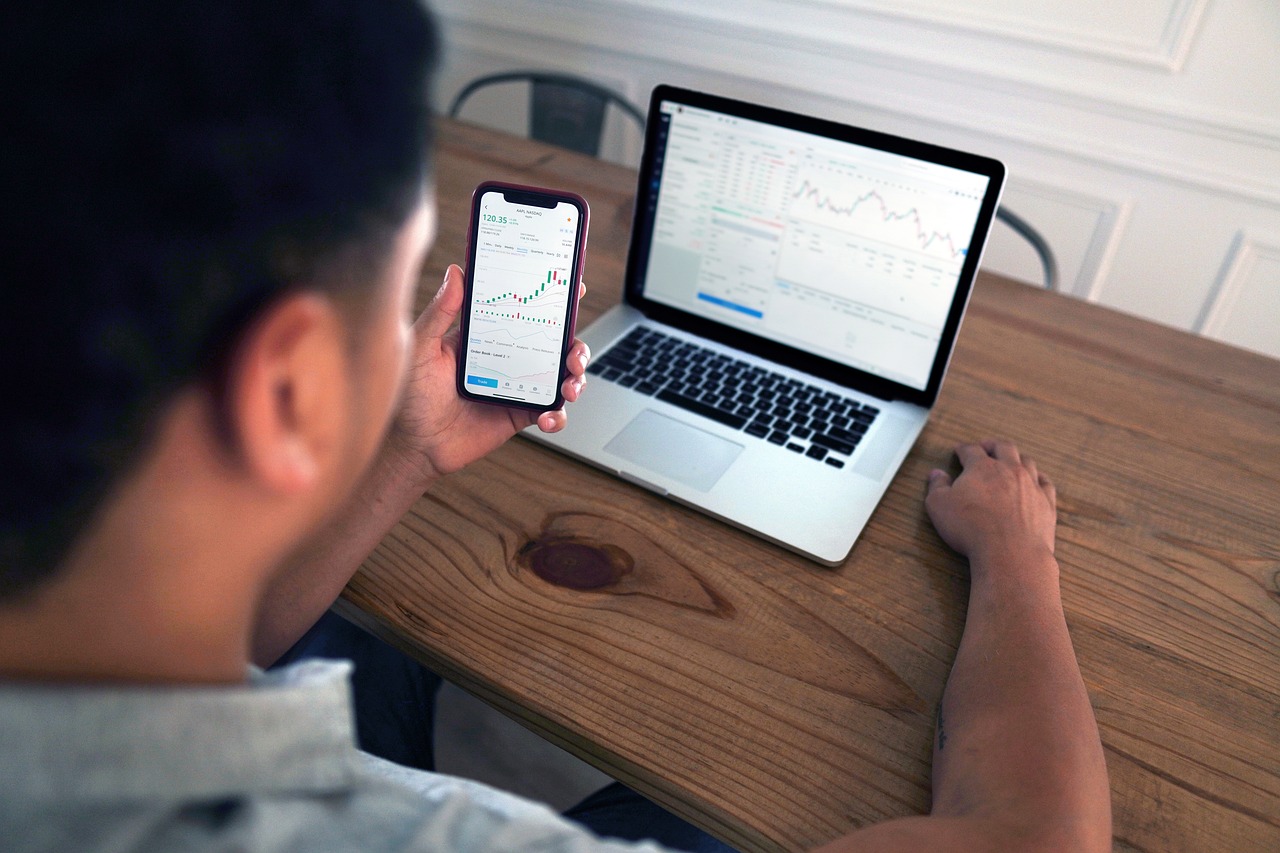
Interpreting VWAP in Trading
When it comes to trading in the volatile world of cryptocurrency, understanding the nuances of the Volume Weighted Average Price (VWAP) can be a game changer. This powerful tool doesn't just sit there; it actively helps traders make informed decisions. Imagine VWAP as your personal compass in the chaotic sea of crypto trading, guiding you through the ups and downs of price movements. By interpreting VWAP correctly, you can uncover potential market trends, identify support and resistance levels, and even spot ideal entry and exit points for your trades.
So, how exactly does VWAP signal these crucial trading insights? First, let’s talk about market trends. When the price is above the VWAP, it typically indicates a bullish trend, suggesting that buyers are in control. Conversely, when the price dips below the VWAP, it often signals a bearish trend, hinting that sellers are taking over. This dichotomy can be incredibly useful for traders looking to time their entries and exits. Think of it like a traffic light: green means go (buy), and red means stop (sell).
Moreover, VWAP acts as a dynamic support and resistance level. Traders often look for price reactions around the VWAP line. If the price approaches VWAP from below and bounces off it, that can be interpreted as a strong support level. On the flip side, if the price hits VWAP from above and then retraces, it can be seen as resistance. This behavior can provide traders with actionable insights on where to place their trades. In fact, many traders set up alerts to notify them when the price approaches these critical VWAP levels, ensuring they never miss a potential trade opportunity.
Another critical aspect of interpreting VWAP is recognizing its role in volume analysis. A significant volume spike at or near the VWAP can signal a strong commitment from traders, potentially leading to a price movement in that direction. For example, if you notice a surge in buying volume as the price approaches VWAP, it could indicate that traders are confident in pushing the price higher. This is where the synergy between price and volume becomes apparent, reinforcing the importance of keeping an eye on both metrics.
To summarize, interpreting VWAP in trading is about more than just looking at a number on a chart. It requires you to consider the broader context of market trends, support and resistance levels, and volume dynamics. By doing so, you can enhance your trading strategy and make more informed decisions. So, the next time you look at VWAP, remember: it’s not just a line; it’s a vital tool that can help you navigate the often turbulent waters of cryptocurrency trading.
- What is VWAP? VWAP stands for Volume Weighted Average Price, which is a trading benchmark that reflects the average price a security has traded at throughout the day, based on volume and price.
- How can VWAP help in trading? VWAP helps traders identify market trends, potential support and resistance levels, and optimal entry and exit points, improving their overall trading strategy.
- Is VWAP suitable for all trading strategies? While VWAP can be beneficial for many trading strategies, it is especially useful for intraday trading, where timing and price execution are critical.
- Can VWAP be used in conjunction with other indicators? Absolutely! Many traders combine VWAP with other indicators, such as moving averages or RSI, to create a more comprehensive trading strategy.

Benefits of Using VWAP
When it comes to trading in the fast-paced world of cryptocurrency, having the right tools at your disposal can make all the difference. One such tool that has gained immense popularity among traders is the Volume Weighted Average Price (VWAP). But what exactly are the benefits of using VWAP? Let’s dive into some of the key advantages that can transform your trading strategy.
First and foremost, VWAP serves as a reliable benchmark for assessing trade execution quality. By comparing your entry prices to VWAP, you can quickly determine whether you are buying or selling at favorable prices. For instance, if you purchase a cryptocurrency at a price below the VWAP, it indicates that you’re getting a better deal compared to the average market price during that trading day. This can significantly boost your overall profitability.
Another compelling advantage is the reduction of market impact. When traders execute large orders, they can inadvertently influence the market price, leading to unfavorable conditions. VWAP helps mitigate this risk. By breaking down large orders into smaller trades that align with the VWAP, traders can execute their strategies more discreetly. This not only helps maintain the market's stability but also ensures that your trades don’t attract unwanted attention.
Moreover, using VWAP enhances decision-making. It provides traders with a clear picture of market trends, allowing them to identify potential support and resistance levels. For example, if the price of a cryptocurrency consistently hovers above the VWAP, it may indicate a bullish trend, while prices below the VWAP could suggest bearish sentiment. This insight can guide traders in making informed decisions about when to enter or exit a position.
Additionally, VWAP can be a powerful tool for risk management. By understanding how the VWAP behaves in relation to price movements, traders can set more effective stop-loss orders. If the price drops below the VWAP, it could signal a potential trend reversal, prompting traders to exit their positions to minimize losses. Conversely, if the price rises above the VWAP, it may be a signal to hold or even add to a position.
In summary, the benefits of using VWAP in your trading strategy are multifaceted:
- Enhanced Trade Execution: Provides a benchmark for favorable entry and exit points.
- Market Impact Reduction: Allows for discreet execution of large orders.
- Improved Decision-Making: Offers insights into market trends and potential support/resistance levels.
- Effective Risk Management: Aids in setting stop-loss orders based on market behavior.
Incorporating VWAP into your trading toolkit can lead to more informed decisions and ultimately, greater success in the volatile world of cryptocurrency trading. Whether you're a seasoned trader or just starting, understanding and leveraging VWAP can give you the edge you need to navigate this exciting market.
What is VWAP?
VWAP stands for Volume Weighted Average Price. It is a trading benchmark that reflects the average price a security has traded at throughout the day, based on both volume and price.
How is VWAP calculated?
VWAP is calculated by taking the cumulative total of price times volume and dividing it by the cumulative volume over a specific period.
Why should I use VWAP?
VWAP helps traders gauge market trends, improves trade execution, reduces market impact, and enhances decision-making, making it a valuable tool in trading strategies.
Can VWAP be used in all markets?
Yes, VWAP can be applied to various markets, including stocks, forex, and cryptocurrencies, making it a versatile tool for traders.
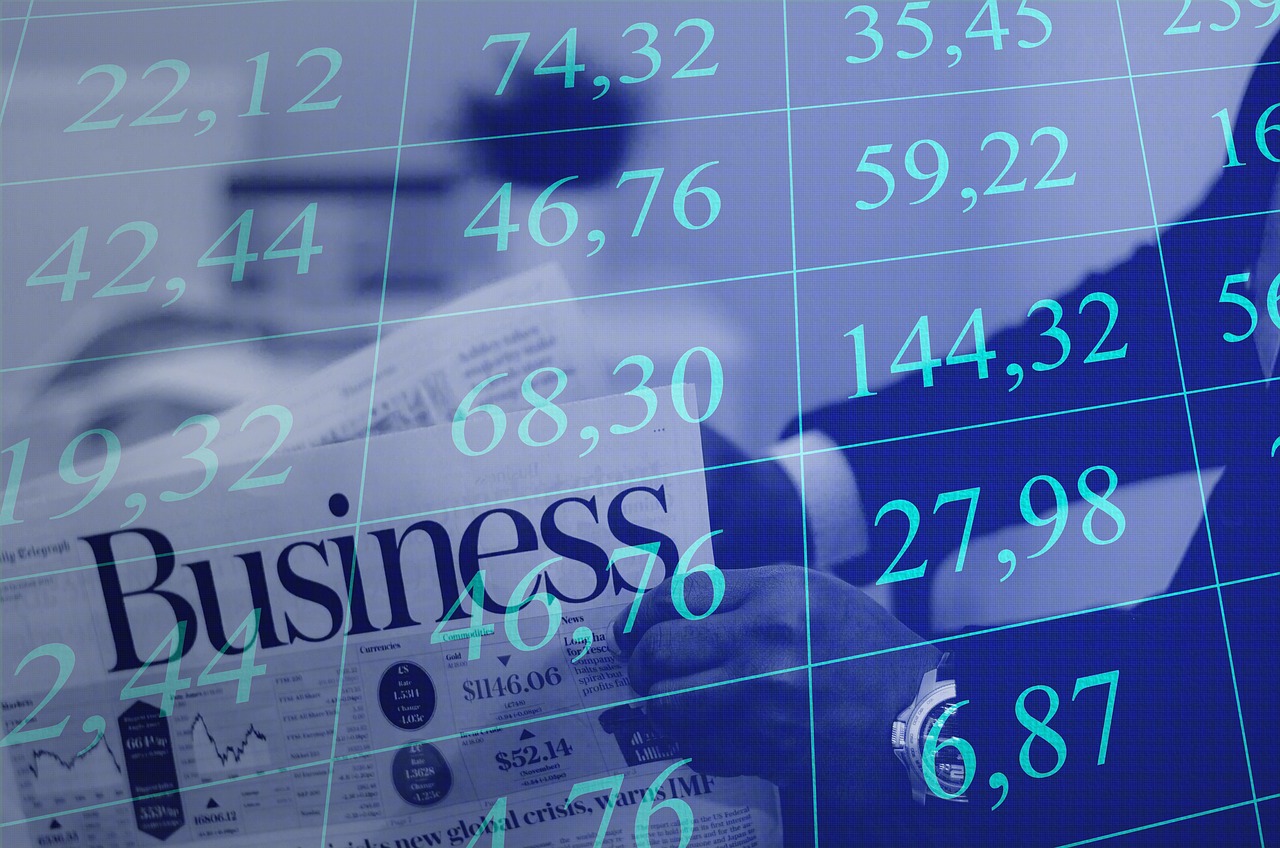
Enhanced Trade Execution
When it comes to trading in the volatile world of cryptocurrency, having a solid strategy can make all the difference. One of the key advantages of utilizing the Volume Weighted Average Price (VWAP) is its ability to enhance trade execution. So, what does that mean for you as a trader? Simply put, VWAP acts as a benchmark that helps you assess the quality of your trades, allowing you to make more informed decisions.
Imagine you're at a bustling market, trying to buy fresh produce. If you know the average price of apples throughout the day, you can avoid overpaying when the vendor tries to sell them at a premium. Similarly, VWAP gives traders a reference point to evaluate their entry and exit prices against the average price at which the asset has traded. This means that if you're buying below the VWAP, you're likely getting a good deal, while selling above it could indicate a profitable exit.
Moreover, VWAP isn't just about knowing whether you're getting a good price; it's also about understanding the market context. By comparing your trade execution to the VWAP, you can gauge whether you're contributing to market momentum or if you're getting swept up in the noise. For example, if you're consistently buying above the VWAP, it might be a signal to reassess your strategy, as you could be pushing the price up unnecessarily, which can lead to higher slippage and costs.
To further illustrate how VWAP can enhance trade execution, consider the following table that outlines the relationship between trade execution prices and VWAP:
| Trade Type | Execution Price | VWAP Price | Execution Quality |
|---|---|---|---|
| Buy | $50 | $52 | Good |
| Sell | $54 | $52 | Excellent |
| Buy | $55 | $52 | Poor |
In this example, you can see how the execution quality changes based on the relationship between the trade price and the VWAP. When buying below the VWAP, the execution is deemed good, indicating that the trader is making a favorable purchase. Conversely, selling above the VWAP results in excellent execution quality, showing that the trader is capitalizing on market conditions. However, buying above the VWAP is marked as poor execution, highlighting the risks associated with overpaying.
In essence, VWAP serves as a compass for your trading journey. By consistently monitoring your trades in relation to the VWAP, you can refine your strategy, improve your execution, and ultimately increase your chances of success in the dynamic crypto market. So, the next time you make a trade, remember to check the VWAP—it could be the key to unlocking better performance and more profitable outcomes!
- What is VWAP? VWAP stands for Volume Weighted Average Price, and it reflects the average price at which a security has traded throughout the day, weighted by volume.
- Why is VWAP important in crypto trading? VWAP helps traders assess market trends, identify support and resistance levels, and improve trade execution quality.
- How can I calculate VWAP? VWAP is calculated by taking the cumulative total of price times volume and dividing it by the cumulative volume over a specific time period.
- Can VWAP be used for day trading? Yes, VWAP is particularly useful for day traders as it provides insights into intraday price movements and helps in making timely trading decisions.
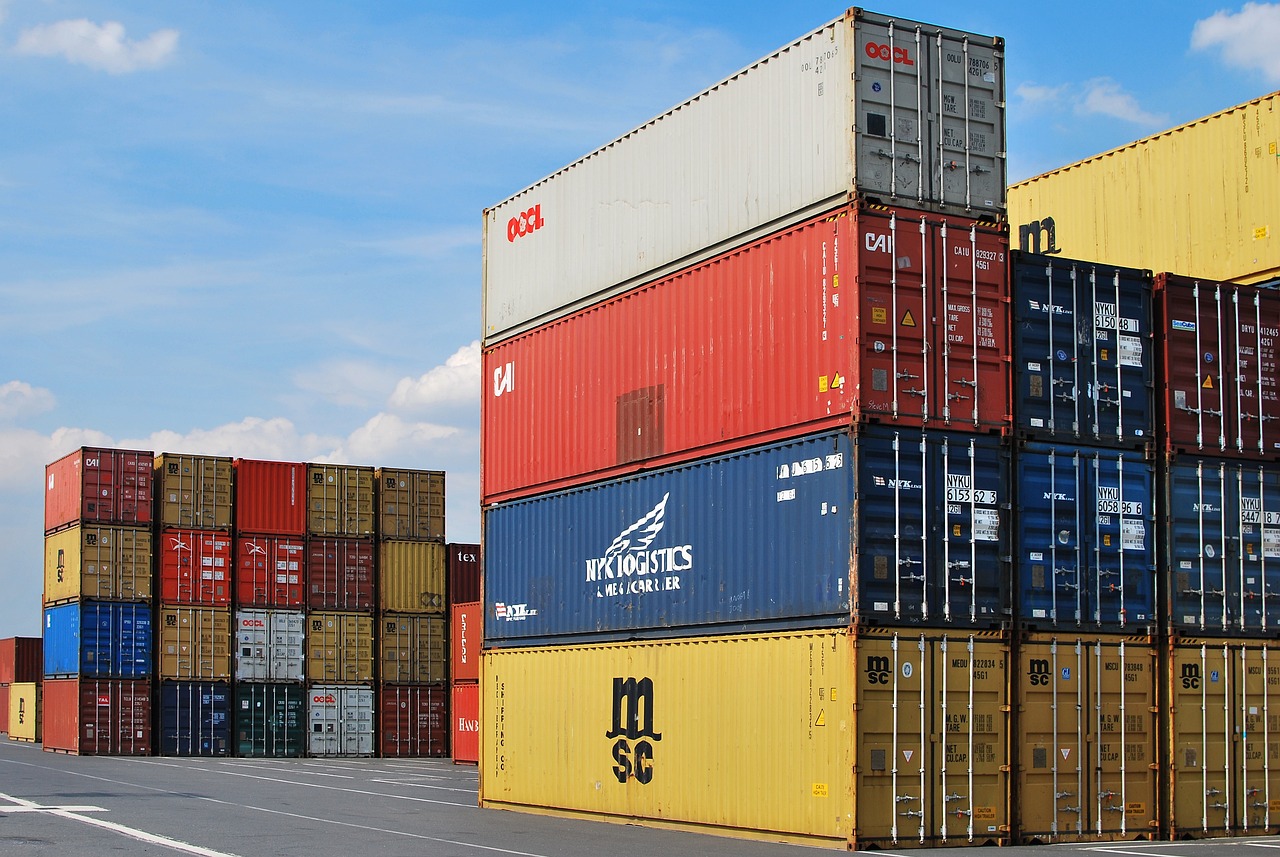
Market Impact Reduction
When it comes to trading in the volatile world of cryptocurrency, every decision counts, and the impact of your trades can reverberate throughout the market. This is where the power of the Volume Weighted Average Price (VWAP) comes into play. By utilizing VWAP, traders can execute large orders without causing significant fluctuations in the market price. Imagine trying to fill a bathtub with a garden hose; if you turn the water on too quickly, you’ll create a mess that spills over. In trading, executing large orders too aggressively can lead to unwanted price spikes or drops, impacting your overall strategy.
VWAP acts as a guiding star for traders, allowing them to gauge the average price at which a security has traded throughout the day, adjusted for volume. By aligning their trades with the VWAP, traders can ensure that they are buying or selling at a price that reflects the average market sentiment, thereby reducing their market impact. The essence of this strategy lies in the timing and volume of trades. For instance, if a trader wants to sell a significant amount of a cryptocurrency, executing the order all at once could lead to a sharp price decline. Instead, by breaking down the order into smaller chunks and spreading them out over time, the trader can minimize their footprint in the market.
Additionally, traders can utilize VWAP to identify optimal entry and exit points. When the market price is below the VWAP, it may signal a buying opportunity, while prices above the VWAP could indicate a selling point. This insight allows traders to make more informed decisions, reducing the likelihood of causing a stir in the market. It's like dancing in a crowded room; if you move too suddenly or aggressively, you'll bump into people and draw attention. However, if you move gracefully and with intention, you can navigate the space without disrupting the flow.
Furthermore, implementing VWAP into trading strategies can lead to better execution quality. By comparing their execution prices to the VWAP, traders can assess whether they are achieving favorable prices. If they find themselves consistently trading above the VWAP when buying or below it when selling, it may indicate a need to adjust their strategy. This self-assessment not only enhances individual trading performance but also contributes to overall market stability.
In summary, reducing market impact is crucial for traders looking to maintain their edge in the competitive crypto landscape. By leveraging VWAP, they can execute trades more discreetly, ensuring that their actions do not disrupt the market dynamics. This approach not only benefits the individual trader but also contributes to a healthier trading environment for all participants.
- What is VWAP?
VWAP stands for Volume Weighted Average Price, and it serves as a trading benchmark that reflects the average price a security has traded at throughout the day, based on both volume and price.
- How can VWAP help in reducing market impact?
By allowing traders to execute large orders more discreetly and strategically, VWAP helps minimize the visibility of trades, thus reducing the likelihood of causing significant price fluctuations.
- Can VWAP be used for all cryptocurrencies?
Yes, VWAP is applicable to any cryptocurrency that has sufficient trading volume, making it a versatile tool for traders across various digital assets.
- Is VWAP only useful for day trading?
While VWAP is particularly beneficial for day traders looking for short-term opportunities, it can also be used by swing traders and long-term investors to assess market conditions.
Frequently Asked Questions
- What is Volume Weighted Average Price (VWAP)?
Volume Weighted Average Price (VWAP) is a trading benchmark that provides the average price a security has traded at throughout the day, factoring in both volume and price. It serves as a crucial tool for traders to gauge market trends and make informed trading decisions.
- How is VWAP calculated?
VWAP is calculated by taking the cumulative total of price multiplied by volume and then dividing that by the cumulative volume. This formula helps traders understand the average price at which a security has traded over a specific period, making it easier to analyze trading behavior.
- Why is VWAP important for traders?
VWAP is essential because it helps traders assess their trade execution quality, identify potential support and resistance levels, and determine optimal entry or exit points. By comparing their trade prices to the VWAP, traders can evaluate whether they are buying or selling at advantageous prices.
- What are the main components of VWAP calculation?
The two main components of VWAP calculation are price and volume. Understanding how each of these elements influences the VWAP figure is key for traders aiming to effectively leverage this tool in their trading strategies.
- How does volume influence VWAP?
Volume plays a significant role in VWAP calculation. A higher trading volume at specific price levels can drastically affect the VWAP, making it vital for traders to monitor volume trends alongside price movements to gain a comprehensive understanding of market dynamics.
- Can VWAP help reduce market impact?
Yes, using VWAP can help minimize market impact by allowing traders to execute large orders more discreetly. By aligning their trades with VWAP, traders can better manage how their orders affect the market, leading to less volatility and improved execution.
- How can I use VWAP in my trading strategy?
To effectively use VWAP in your trading strategy, you can compare your entry and exit prices to the VWAP. If you buy below the VWAP, it may indicate a good entry point, while selling above the VWAP could signal a favorable exit. This approach helps traders make more informed decisions based on market conditions.

